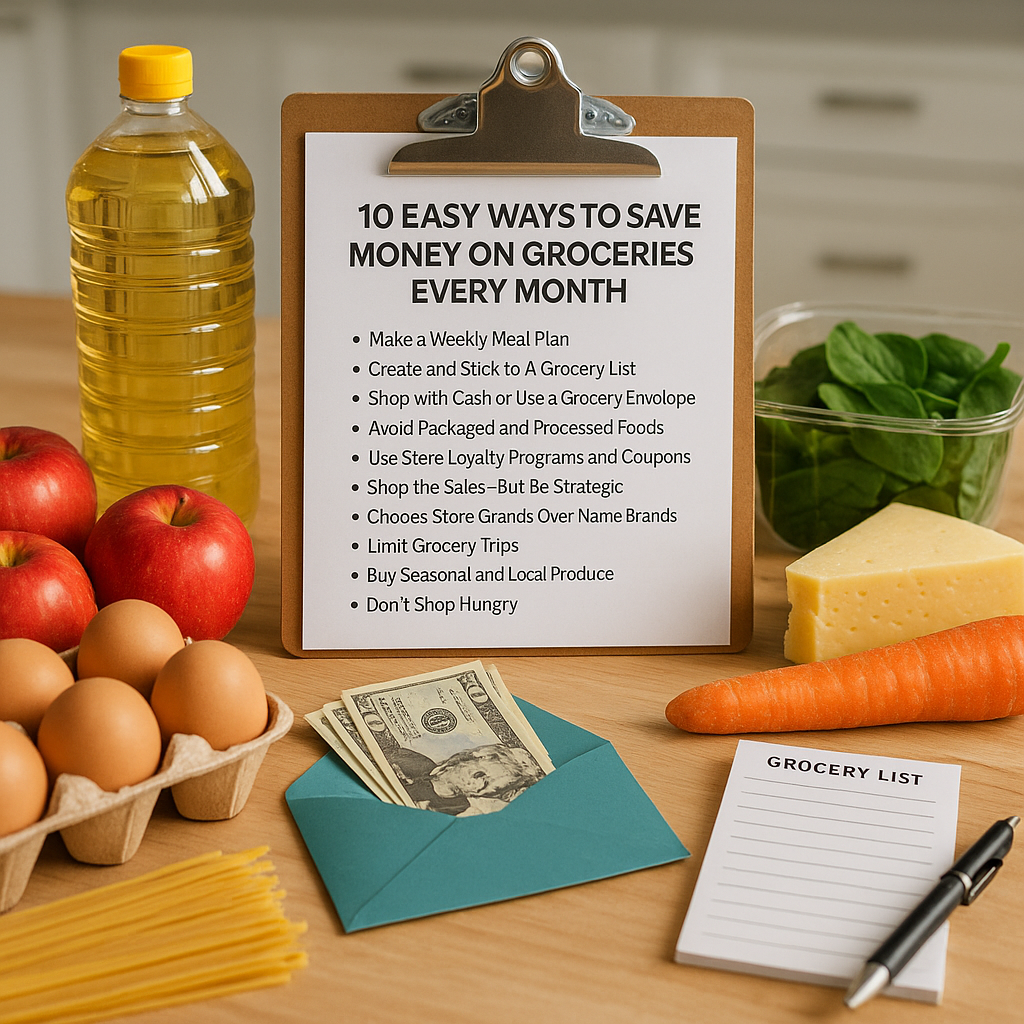Why Groceries Are a Hidden Budget Killer
Many families are surprised by how much of their monthly budget disappears at the grocery store. Without realizing it, you may be overspending on brand-name items, impulse buys, and food waste. Fortunately, there are simple and effective strategies to cut costs without sacrificing quality or nutrition. Let’s explore ten easy ways to save money on groceries every single month.
Make a Weekly Meal Plan
Meal planning helps you avoid random purchases and waste. When you plan your meals ahead of time, you buy only what you need. This also prevents last-minute takeout when you’re unsure what to cook. Try building your weekly menu around items you already have and meals that share ingredients to make the most of your budget.
Create and Stick to a Grocery List
A grocery list is one of the most powerful tools for saving money. It keeps you focused and prevents unnecessary spending. Once your meals are planned, make a list of everything you need and stick to it. Use apps like Google Keep or AnyList to keep your list accessible and shared with family members.
Shop with Cash or Use a Grocery Envelope
Setting a cash limit for your groceries is a smart way to stay in control. Try withdrawing your grocery budget in cash and bringing only that amount to the store. This physical limit helps you prioritize your purchases and resist impulse buys. If you prefer cards, consider using the envelope budgeting system digitally.
Avoid Packaged and Processed Foods
Packaged foods are often priced higher due to convenience. Cooking from scratch not only saves money but often results in healthier meals. Buy whole vegetables and fruits, grate your own cheese, and skip the pre-cut items. Over time, you’ll notice a significant reduction in your grocery bill.
Use Store Loyalty Programs and Coupons
Sign up for your local store’s loyalty program to access exclusive discounts and digital coupons. Many apps also provide personalized deals based on your shopping habits. Always check for available coupons before you shop, and combine them with in-store sales for maximum savings.
Shop the Sales—But Be Strategic
Take advantage of weekly sales, but don’t fall into the trap of buying items just because they’re discounted. Stick to essentials and bulk-buy only when it makes sense. Focus on non-perishables and frozen goods that your family uses regularly. Avoid stockpiling perishables that may go to waste.
Choose Store Brands Over Name Brands
Store brands often offer the same quality as name brands at a lower cost. In many cases, they’re produced by the same manufacturers. Start replacing a few name-brand products with store-brand alternatives. You might find that you prefer the taste—and you’ll definitely prefer the price.
Limit Grocery Trips
Each trip to the store increases the chance of spending more. Try to do one main grocery trip per week. If necessary, allow for a small secondary visit for fresh produce or milk, but avoid making frequent unplanned stops. Fewer visits mean fewer temptations and more control over your spending.
Buy Seasonal and Local Produce
Seasonal fruits and vegetables are usually more affordable, fresher, and more flavorful. Shopping at farmers’ markets or local stands can offer good value and support your local community. Learn what’s in season in your area and plan meals around those ingredients to maximize savings.
Don’t Shop Hungry
Shopping on an empty stomach leads to poor financial decisions. When you’re hungry, everything looks appetizing, and you’re more likely to grab snacks and convenience foods. Have a snack before you shop to stay focused and avoid buying more than you need.
Smart Grocery Shopping Leads to Real Savings
Saving money on groceries doesn’t require extreme couponing or making drastic lifestyle changes. Small, consistent habits can lead to big savings over time. By planning your meals, creating a list, avoiding impulse buys, and making strategic choices, you can lower your grocery bill and free up money for other important goals. Start with a few of these tips this week and build from there. You’ll be amazed at how much you can save.
